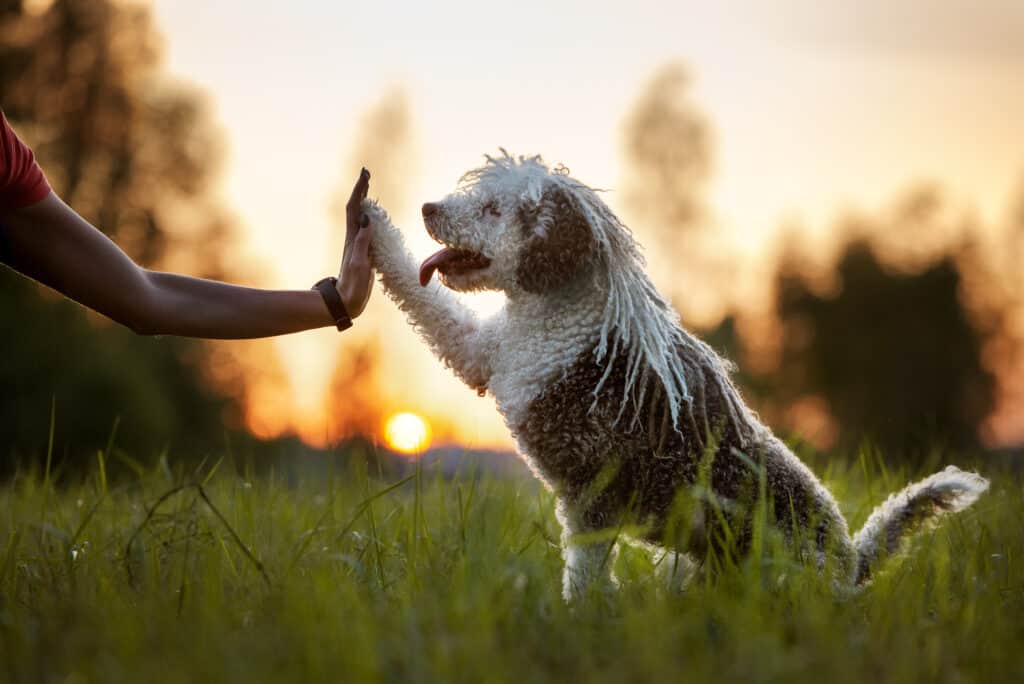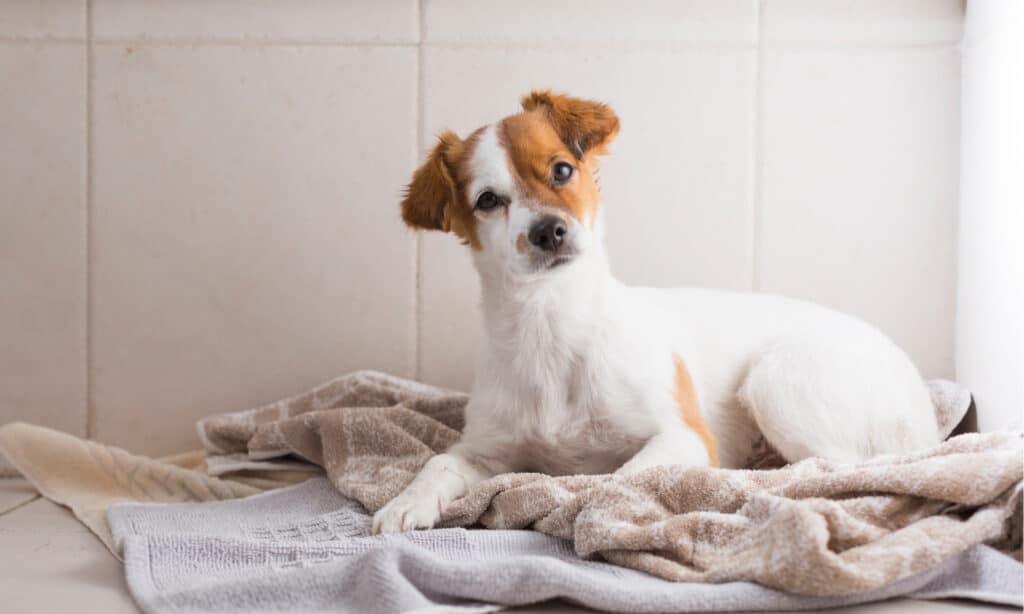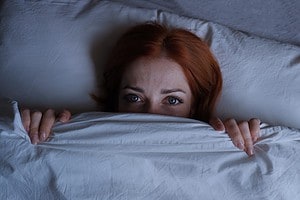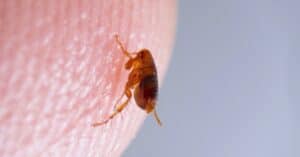When it comes to ending flea infestations, one of the most popular beliefs is baking soda is the best choice for natural flea control. As most homeowners limit the use of hazardous chemical agents that irritate the skin and airways of pets and people, common pantry staples like baking soda are much more appealing. But, the question remains does baking soda kill fleas?
While baking soda helps, it’s not quite as easy as that as it’s not effective on its own, and it takes a lot of baking soda mixed with salt to work correctly. Plus, the baking soda has to be fresh and not a package you purchased years ago. Here are six things you need to know about the use of baking soda to effectively end flea infestations.
Fleas Spread Disease

Pets are wonderful companions, but their fleas aren’t.
©otsphoto/Shutterstock.com
Pets are wonderful companions, but the fleas stuck in their fur are not fun. Fleas survive solely on blood from pets and humans, lay eggs, and repeat that cycle until their death. Thousands of fleas take over your home in little time.
As fleas carry diseases like Bubonic plague, cat scratch disease, flea-borne typhus, an inflammatory skin disease called tungiasis, and rabbit fever, handle infestations quickly. Kill fleas and prevent these diseases from impacting your family’s health. Plus, some people’s and pets’ immune systems react negatively to flea bites, a condition called flea-bite dermatitis, which causes inflamed, itchy, and sore skin.
Adult Fleas Live Upwards of Three Months
Fleas have four life stages starting with eggs and progressing through larvae, pupae, and adult fleas. A female flea lays around 20 to 50 eggs per day, and those eggs take no more than 10 days to hatch. Not every egg hatches, but those that do ingest non-viable eggs and adult flea feces, which helps them pupate and hatch into adult fleas within 20 days of the eggs being laid.
Once an adult flea hatches, its lifespan depends on the humidity level and food supply. Without meals, they only live for two or three days. With hosts, they can live for upwards of three months. Flea control can take months, so it’s important that you clean your floors and furniture thoroughly, wash pets daily until the infestation ends, and use a flea comb to remove adult fleas throughout the day.
Baking Soda Must Be Mixed With Salt to Work Effectively

Fleas require blood and humidity to live.
© ThamKC/Shutterstock.com
It is known that fleas need humidity for larvae to develop. Reducing humidity is one way to kill developing fleas, and that’s why exterminators recommend pet-safe substances like baking soda.
According to the exterminators at Green Pest Solutions, baking soda is only effective when it’s mixed with iodized salt at a 1:1 ratio. Sprinkle it liberally over carpeting, upholstery, and pet beds, and let it sit before vacuuming. The exterminators do state that baking soda has to be fresh and can’t be something that’s been sitting around for months.
Salt is abrasive and damages the larvae and eggs’ protective covering and works with baking soda to absorb moisture and cause dehydration. There are no scientific studies that back this up, however. It’s just as likely that the thorough vacuuming of carpets and upholstery every few days as flea eggs hatch is the reason this flea prevention method works.
The Baking Soda and Salt Mixture Must Sit Overnight
The frustrating aspect of baking soda and salt is that it must be left on bedding, upholstery, and carpeting overnight. While salt and baking soda harm fleas, salt damages carpet fibers. The salt and baking soda mix has to be reapplied every three days for upwards of a month, which means the damage to carpet fibers is hard to avoid. What are better options?
Certain Scents and Essential Oils Work Well for Flea Prevention
Researchers at the University of California’s Department of Entomology studied the effects of different agents on fleas and flea larvae. Botanical insecticides including hexa-hydroxyl fragrance oils like pine oil were effective flea repellents.
Limone is found in the essential oils of citrus fruits, peppermint, and rosemary. It attacks the peripheral nervous system without impacting people or animals. Limone requires regular applications to work effectively, so spray essential oils over bedding, carpets, and upholstery regularly after vacuuming them. Do a spot test first to avoid staining upholstery and carpeting.
How Do You Get Rid of Fleas in Your House? This Works Well!
Skip the baking soda and salt and use these methods to kill fleas quickly. Start by asking your vet for a flea-preventative pill containing nitenpyram. This oral medication starts killing adult fleas within half an hour. After giving your pet that pill, start getting the bathroom ready for a pet bath. You need:
- Blue Dawn dish soap
- Towels for drying
- A flea comb
- Blunt tweezers
- A small container filled partway with rubbing alcohol

Towel dry your pet after a bath and use a flea comb to remove any fleas that didn’t get washed down the drain.
©eva_blanco/Shutterstock.com
Wash your dog or cat in Dawn dish soap, the regular blue one that’s used by wildlife conservationists to wash oil from waterfowl after oil spills. Once the suds cover your pet, wait a few minutes. Use blunt tweezers or your fingertips to capture any fleas crawling for the ears, nose, or eyes. Drop them into the rubbing alcohol.
Dawn cannot kill eggs or larvae, but it does drown the adult fleas. It also removes the flea feces that larvae feed on. As flea feces contain a lot of dehydrated blood, don’t be surprised to see the bath water turn pink or red.
After fully rinsing the suds from your pet’s fur and skin, towel dry your pet and use a flea comb to remove any fleas that didn’t get washed down the drain. Repeat these baths each day until there are no longer any fleas on the pet.
Be proactive and vacuum carpeting, upholstery, and pet beds thoroughly. Wash and tumble dry pet beds with the towels you used. The heat from the dryer cycle removes humidity and makes it hard for flea larvae to survive.
Keep Pets Away From Other Animals and Prevent Reinfestation
Keep your pet away from other animals and avoid flea reinfestations. If another animal keeps giving your dog or cat fleas, the battle will continue.
It’s going to take time to rid your home of fleas, but with a mix of regular cleaning, Dawn dish soap baths, and flea combs, you’ll have it under control. Once you do, talk to your vet about topical or oral flea preventatives that kill fleas, larvae, and eggs.
Thank you for reading! Have some feedback for us? Contact the AZ Animals editorial team.








